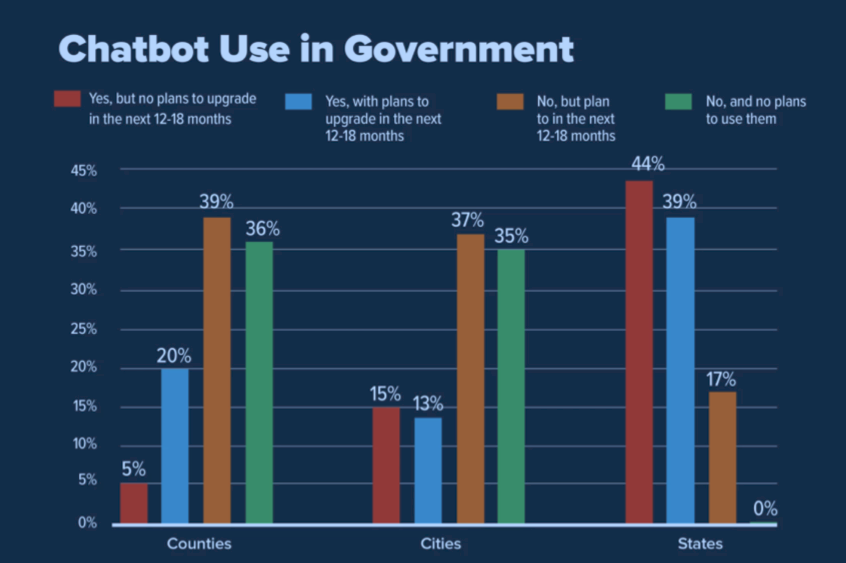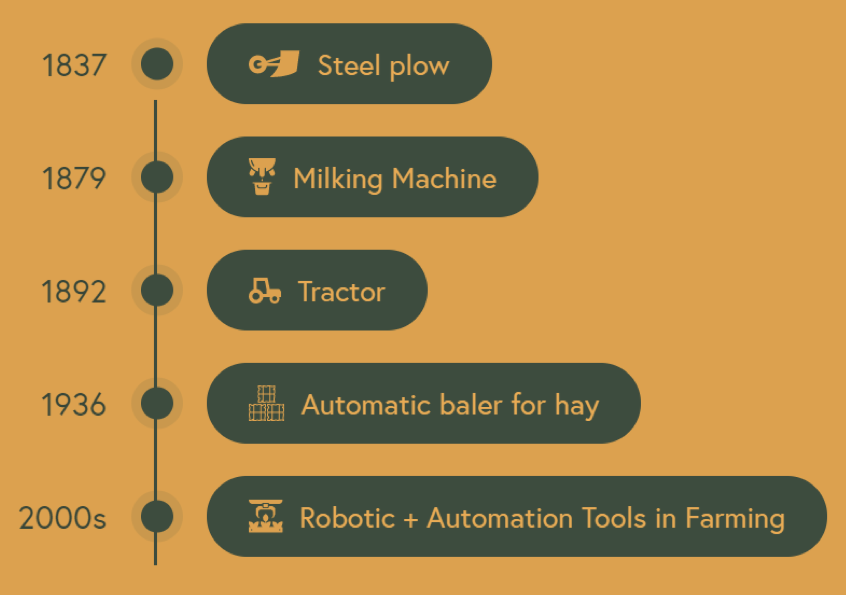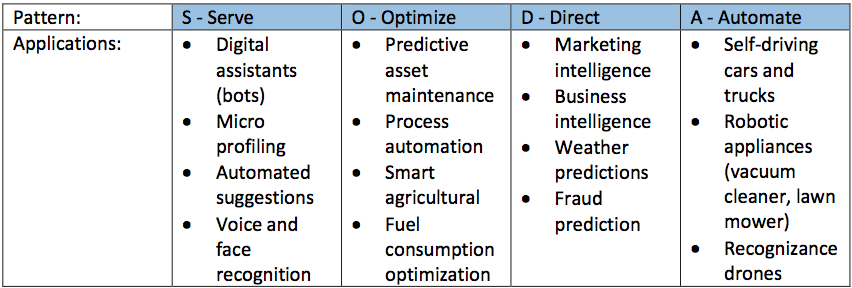
In the first two articles on AI and Ethics we have focused on the emergence of artificial intelligence, the central place it is taking today and the different factors organizations need to address in order to build their flexible AI muscle.
In this third article we want to focus on some of the AI patterns that have been applied so far. Patterns can provide you with insights on how AI can be used and can inspire you to come up with your own implementation.
AI in action today
The retail business is built around providing a personalized shopping experience. Understanding who you are and what matters to you is paramount. AI is used to sift through enormous volumes of data including point of sale data and card data and combine those with external market data. This provides different customer profiles and specific client characteristics. What matters to a specific client can be as different as the price, the service, the waiting time or the width and depth of the assortment offered. Some of the aspects deemed relevant will differ per product or product category. Even the weather (weather information) can influence what customers are buying. Companies that have been working on continuously improving the personal shopping experience range from Amazon to Walmart.
The better the information available in the front-end (the store), the better the backend fulfillment can be (the warehouse and transport). How much to order, when and in what volumes have a big impact on warehouse costs. It also influences distribution and transport: should many small vans be used or a couple of big trucks? Is a central warehouse hub the way to go or is working with smaller, connected local hubs smarter? Trucks on the road can be tracked in real-time using GPS to understand current truck location and remaining distance to the target. This information can be used to achieve better efficiency and performance in transport and logistics. Volvo Trucks is one of the companies that has equipped trucks with a telematics and diagnosis system. The data is sent in real-time to the Volvo Trucks International Uptime Center in Gent. Advanced machine learning algorithms are used to analyze the data and predict malfunctions. Rio [1] can track the exact vehicle location per minute for €0,13 day per vehicle, so that you and your client exactly know when a delivery can be expected.
Another aspect is understanding and managing how teams spend their time. Tracking can be real- time, so immediate action results in better overall performance and increases agility. Companies like Villeroy & Boch, HPE and Zuellig Pharma are using Intelligent RPA from SAP for this purpose. G&J Pepsi, Avanade and Illimity have chosen Microsoft Power Automate.
AI in finance includes fraud detection and prevention. By feeding the AI historic data it is able to build a model that uses fraud indicators that it has associated with fraud. Based on certain values for these indicators financial transactions are filtered out to be investigated more closely. This alleviates the burden of having to sift through all transactions. And if the model is anything good, it should also help in early detection of potential fraud. In a September 2019 article in Forbes [2], it was concluded that 80% of fraud specialists have seen AI-based platforms reduce false positives, payments fraud, and prevent fraud attempts. Identity Trust Global Network, offered by Kount, one of the leading players in this space, is used by companies like Baskin Robbins, BP, New Balance, Staples and Telstra.
As banks are reducing their physical presence and are closing many of their offices they are increasingly relying on chatbots to interact with their clients. Chatbots should be intelligent enough to quickly understand what clients are looking for and providing them exactly that. Also, they should be able (by using other software) to authenticate clients.
In automotive AI is helping organizations to streamline their manufacturing processes. Examples of this are removing constraints for the ongoing process, and ensuring that production volumes are in line with demand. Product safely is another important aspect where AI plays its role. Monitoring the process enables applying changes in real time. Process monitoring also helps in understanding where quality checks are needed. This can change over time, depending on the performance of the process. Predictive maintenance facilitates replacing components before they break down. This ensures that the machinery will not come to a standstill, which can be costly.
Governments are using AI to streamline communication with citizens. Citizens are required to provide information (for instance: provide an income tax statement), or are in need of a government service, such as requesting a new passport or driver’s license. Here also, virtual assistants and chatbots are used to navigate citizens to the correct webpage (filling out forms) or to serve them the information needed. An article on GovTech.com concluded that chatbots already have become a necessity given the impact of Covid-19.

In telecom advanced algorithms are used to look for patterns in the data. These patterns help telcos to understand where peak usage can be expected and when. With this information telcos can take preventive actions so that telco users are spared a negative experience. These interventions can be seen as an adhoc way of network optimization. Preventive maintenance of their network (masts, routers, etc) is another way in which telcos are using AI. In the frontend (stores, website) virtual assistants and chatbots can play a role. In the backend (robotic) process automation help manage large volumes of repetitive work. Examples of this are data entry work, billing and order fulfillment.
In agriculture, AI is used in weather forecasting. Both soil and crop are monitored, which can be done using drones. Analysis of historical crop yields provide an estimate of what crops to sow, when to sow it, how to manage it and when it should be harvested. After sowing, the crop health can be monitored by drones. Where needed, extra fertilizer or water can be dispensed. Agricultural robots can be part of getting the products of the land, instead of hiring manual laborers, who all perform differently. Farming in this way is known as precision farming. Future Acres is one of the companies that is dedicated to applying what they call ‘the farm tools of tomorrow’.

Understanding the common patterns
1. Serving people better by hyper-personalization. Communicating better with people and providing them with the experiences they want is one of the areas in which AI has been able to make considerable progress. In this category, applications are routing people with complaints to be operator best suited, based on voice characteristics (including level of emotion), chatbots and suggestions that include personal history. This category also covers the smarter home: opening your front door based on recognizing your face, listening to your favorite music by telling what you want to hear (recognizing your voice) and setting the lights and temperature by clapping your hands.
2. Optimize. Being more effective and efficient in carrying out tasks in the backend is another area where progress has been made by applying artificial intelligence. Here the applications are continuous monitoring of processes and constraints and using robots where this makes sense. Monitoring traffic and rerouting it to avoid traffic queues is already operational in cities like Stockholm and Singapore. In agriculture combining historic crop and harvest result with soil and weather information provide detailed models suggesting which part of the area should be planted with which crop, and how much nutrients and water is needed. During a transatlantic flight 20 TB of data is generated. This data can be analyzed in real-time to improve flight path planning and reducing jet fuel consumed. Reducing jet fuel by 1% leads to a $30 billion costs saving over a 5-year period. The same approach can be applied to trucks on the road.
3. Direct. Extracting insights from data is another hot bed for AI. Recognizing patterns in data, identifying anomalies and building models that predict outcomes and identify cases that stick out and need special attention is where AI has made substantial contributions. The Dutch Tax Agency is using algorithmic models that distinguish between income tax forms that need attention and those that don’t based on analysis of a historic data set. In marketing, models are used to understand what audience to target on and to show how effective marketing activities are in moving customers from one category to another.
4. Automate. New areas where AI has made a mark is in autonomous systems, including self-driving cars and using drones for recognizance or transport. Other examples are robots that vacuum your house and cut the grass when this is necessary. In warehouses robots can be activated by AI (or deactivated) based on the need for an extra pair of hands.

As stated in our previous articles, the applications of AI mentioned are part of only a first, and relatively simple form of AI. Steve Wozniak, one of the founders of Apple, has suggested that we should apply the Coffee test to understand the true artificial intelligence has arrived. While the famous Thuring test talks about not being able to distinguish if you had a conversation with a human or a robot, the Coffee test suggest that true AI is here when a robot enters your house and is able to make you a cup of coffee. Not knowing what coffee machine you use, where it is, where the coffee is and solving many similar tasks (without training) would suggest that artificial general intelligence (AGI) has been achieved.
Privacy and data ethics
Many of the applications mentioned and the four patterns underlying it potentially have privacy and ethics issues that should be considered. Use of cameras should not invite your private space. Employees at Amazon and Aldi have been complaining about currently being monitored while at work. Choosing to work with robots means that certain jobs will disappear. How to make sure that the data gathered and the AI software using it are not biased in one or multiple ways? Even in the case that there is no bias, the question should be asked if the outcome is something that society agrees with.
When applying the AI patterns these and similar considerations should be addressed. Ignoring it, will lead to unforeseen and unwanted effects. These can vary from unrest in the workplace to intrusion of your personal space, discrimination and other unwanted effects (wrongful denial of a mortgage, being labelled as a fraud, etc.).
In our fourth and last article on AI and ethics we will show how AI applications and patterns can be applied in an ethical manner, so that the benefits of AI can be used without risking violating the ethical foundations we all agree upon.
1. www.Rio.cloud
2. https://www.forbes.com/sites/louiscolumbus/2019/09/05/how-ai-is-protecting-against-payments- fraud/?sh=226be1674d29
This blog has been co-authored with Erwin Vorwerk.


27 t/m 29 oktober 2025Praktische driedaagse workshop met internationaal gerenommeerde trainer Lawrence Corr over het modelleren Datawarehouse / BI systemen op basis van dimensioneel modelleren. De workshop wordt ondersteund met vele oefeningen en pra...
29 en 30 oktober 2025 Deze 2-daagse cursus is ontworpen om dataprofessionals te voorzien van de kennis en praktische vaardigheden die nodig zijn om Knowledge Graphs en Large Language Models (LLM's) te integreren in hun workflows voor datamodel...
3 t/m 5 november 2025Praktische workshop met internationaal gerenommeerde spreker Alec Sharp over het modelleren met Entity-Relationship vanuit business perspectief. De workshop wordt ondersteund met praktijkvoorbeelden en duidelijke, herbruikbare ri...
11 en 12 november 2025 Organisaties hebben behoefte aan data science, selfservice BI, embedded BI, edge analytics en klantgedreven BI. Vaak is het dan ook tijd voor een nieuwe, toekomstbestendige data-architectuur. Dit tweedaagse seminar geeft antwoo...
17 t/m 19 november 2025 De DAMA DMBoK2 beschrijft 11 disciplines van Data Management, waarbij Data Governance centraal staat. De Certified Data Management Professional (CDMP) certificatie biedt een traject voor het inleidende niveau (Associate) tot...
25 en 26 november 2025 Worstelt u met de implementatie van data governance of de afstemming tussen teams? Deze baanbrekende workshop introduceert de Data Governance Sprint - een efficiënte, gestructureerde aanpak om uw initiatieven op het...
26 november 2025 Workshop met BPM-specialist Christian Gijsels over AI-Gedreven Business Analyse met ChatGPT. Kunstmatige Intelligentie, ongetwijfeld een van de meest baanbrekende technologieën tot nu toe, opent nieuwe deuren voor analisten met ...
8 t/m 10 juni 2026Praktische driedaagse workshop met internationaal gerenommeerde spreker Alec Sharp over herkennen, beschrijven en ontwerpen van business processen. De workshop wordt ondersteund met praktijkvoorbeelden en duidelijke, herbruikbare ri...
Deel dit bericht